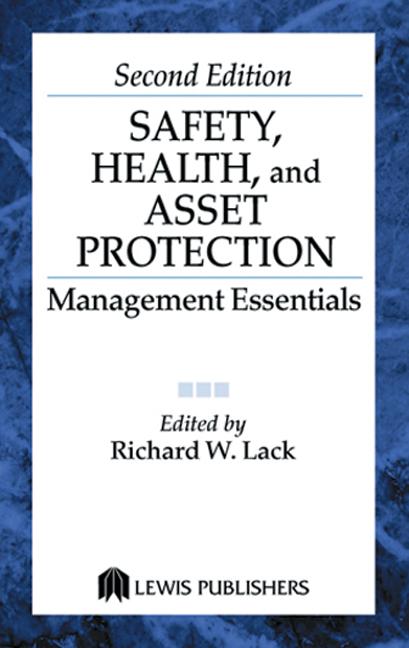Weekly news round-up

The ASSE gets new leadership, the link between motorcycle helmet laws and motorcycle crash fatalities and tips on coping with extreme heat were among the top stories featured on ISHN.com this week.
Popular herbicide under fire in Europe
A key ingredient in RoundUp, the world’s most widely used herbicide, is at the center of a battle over worker and environmental safety in Europe.
Health experts angered by pro-salt study
A recent study suggesting that too little sodium can lead to cardiovascular disease has the American Heart Association (AHA) all fired up.
ASSE Board appoints Dennis Hudson as new Executive Director
The American Society of Safety Engineers (ASSE) Board of Directors has appointed Dennis Hudson as Executive Director effective June 1, 2016.
Plumber dies after being hit by a car
OSHA finds lack of proper 'work zone'
Had his employer properly created a work zone, a passing car on Philadelphia's 63rd Street might not have struck and killed a 27-year-old plumber working to repair an underground leak on a mid-November night in 2015.
Chronic fatigue patients more likely to suppress emotions
Chronic fatigue syndrome patients report they are more anxious and distressed than people who don’t have the condition, and they are also more likely to suppress those emotions. In addition, when under stress, they show greater activation of the biological ”fight or flight” mechanism, which may add to their fatigue, according to new research published by the American Psychological Association (APA).
FTA: Fixing D.C. rail system “a long and difficult task”
Improving worker protection on its "to do" list
The U.S. Department of Transportation’s Federal Transit Administration’s (FTA) temporary safety oversight of the Washington Metropolitan Area Transportation Authority (WMATA) Metrorail system is seeing initial results across the system, FTA Acting Administrator Carolyn Flowers today told the U.S. House Transportation and Infrastructure Committee.
Retired miners risk losing health care, pensions
Health care and pension funds covering tens of thousands of retirees throughout the Appalachian and Midwestern coalfields are “rapidly deteriorating,” according to the United Mine Workers of America (UMWA).
A NIOSH Science Blog post
Extreme heat: Are you prepared for summer work?
The approach of summer is a reminder to us all of the need to recognize, and act to prevent, the harmful effects of excessive heat. The White House has designated May 23–27, 2016, as Extreme Heat Week, during which Federal agencies will work with community planners and public health officials to enhance community preparedness for extreme heat events. Workers are particularly vulnerable to the health impacts of heat exposure.
FairWarning Reports
In 2015, motorcycle crashes helped drive highway death toll to highest level in years
Posted with permission from FairWarning.org: Last year was a bad one for motorcyclists, with a new estimate showing that 5,010 bikers were killed in crashes nationwide, the worst death toll in seven years. The apparent 10 percent increase in motorcycle fatalities, based on an analysis by the Governors Highway Safety Association, coincided with a projected rise of about 8 percent in traffic deaths overall in 2015.
Fingers amputated at workplaces in Wisc., Ill
Two manufacturing companies were recently cited by OSHA in unrelated incidents for failing to prevent hazards that resulted in two workers losing fingers.
Fall + electrocution hazards endanger WV construction workers
A West Virginia contractor found itself on the receiving end of an OSHA investigation after an agency inspector observed an employee working on scaffolding with no fall protection and in close proximity to an electrical power line – a combination that could have proved deadly.
Electrical hazards run the gamut
A firefighter in Kentucky is electrocuted after contacting overhead power line, Kentucky. A factory manager dies after bypassing lockout-tagout. A landscaper in Massachusetts working from a raised portable work platform is electrocuted when a pole saw contacts an overhead power line.
How an electrical current affects the human body
When someone suffers an electrical shock, they actually are – at that moment – part of an electrical circuit. The severity of the injuries they sustain depends on three primary factors: the amount of current flowing through the body (measured in amperes); the path of the current through the body and the length of time the body is in the circuit.
NJ warehouse cited for chemical hazards, HazCom violations
A Passaic, New Jersey warehouse operator was cited earlier this month for two dozen safety violations, including failure to have a written hazard assessment and a hazard communication program (including material safety data sheets), a lack of training for employees required to handle hazardous chemicals, fall hazards, inadequate exit signage, lack of machine guarding, electrical hazards, and a failure to provide eyewash facilities.
A few FAQs about GHS labels
Q: Is there a limit to the number of precautionary statements that appear on the label? A: No. OSHA requires all of the appropriate precautionary statements to appear on the label to warn users of the hazards of the chemical in question.
Extreme Heat Week and worker safety
The White House has designated this week as Extreme Heat Week. For federal agencies, it’s a time to double down on community preparedness for extreme heat events, with the help of community planners and public health officials.
Looking for a reprint of this article?
From high-res PDFs to custom plaques, order your copy today!




